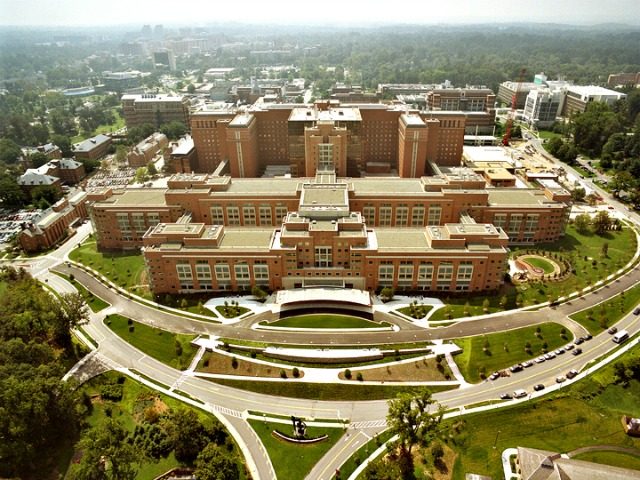The House Science, Space and Technology Committee is looking into whether the National Institutes of Health (NIH) has mismanaged as much as $315 million in taxpayer-funded grants awarded to the Italian research group Ramazzini Institute, an “independent” science academy that focuses on occupational and environmental health threats.
On Friday, the committee sent a letter to Health and Human Services Secretary Tom Price about the funneling of grants to the Italian entity through the NIH’s National Institute of Environmental Health Sciences (NIEHS).
“According to a March 17, 2017 media report, Italy’s Ramazzini Institute has received at least thirteen different NIEHS contracts through four different third parties since 2009, totaling nearly $2 million,” said the letter, signed by Committee Chairman Lamar Alexander (R-Texas) and Oversight Subcommittee Chairman Rep. Darin LaHood (R-Ill.). “Of the thirteen contracts, seven appear to be sole source, representing $1 million taxpayer dollars.
The letter states:
Further, media reports indicate that since 2009 NIEHS has directed at least $92 million in grant funds to the Ramazzini Institute and its U.S. affiliates,” the letter states. “If true, this raises serious questions about the integrity of the acquisition process at NIEHS.
According to public records and media reports, NIEHS contracted with Ramazzini and its affiliates through multiple third parities, yet it is unclear what services were rendered under these contracts.
Reports indicate NIEHS director Linda Birnbaum, a Ramazzini fellow, funneled millions of dollars in NIEHS grant funds to other Ramazzini fellows and their affiliates.
Further, since 1985, reports indicated that, in total, NIEHS has provided $315 million in grant dollars to Ramazzini fellows.
And, the letter noted, NIEHS is not being transparent about its grant protocol.
“More recently, the NIEHS has refused to respond to [Freedom of Information Act] FOIA requests seeking information related to contracts between your Department, including NIH and NEIHS and Ramazzini.
The letter cited multiple lawsuits filed by E&E Legal—not only to gain information on contracts involving Ramazzini and institute fellows but also information about Ramazzini’s U.S. affiliate’s President Phil Landrigan.
“According to reports, Director Birnbaum coordinated with Dr. Landrigan to publish more than two dozen Ramazzini studies in the NIEHS-run journal, Environmental Health Perspectives,” the letter said.
On March 17, the Energy and Environmental Legal Institute (E&E Legal) announced it has filed a lawsuit against HHS. The announcement said:
This is the latest in a series of E&E Legal actions centering on questions about the complex web of relationship of federal employees with, and transfer of millions of public dollars to, overseas environmental groups which increasingly appear to be more activist than scientific,” the press release announcing the lawsuit said.
E&E Legal’s latest Freedom of Information Act (FOIA) suit seeks public records held by HHH’s National Institute for Environmental Health Sciences (NIEHS) division the National Institutes of Health (NIH). Specifically, it seeks copies of contracts that sent U.S. taxpayer money to the International Agency for Research on Cancer (IARC), and to Italy’s Ramazzini Institute (IBR) — a group which openly boasts of getting U.S. taxpayer money, but with no information available to the public as to what this is for or what the public receives for these sums.
The Department’s relationship with Ramazzini is an issue of increasing importance and public interest as more details emerge. Unfortunately, while NIH acknowledged receipt of the request, it has failed to provide a response.”
In 2012, the Environmental Protection Agency (EPA) said it wouldn’t use studies from the Ramazzini Institute involving three chemicals after the National Toxicology Program questioned its methodologies (Greenwire, March 9, 2012).
The American Chemistry Council in January encouraged lawmakers on Capitol Hill to “seek reform” of the Lyon, France-based International Agency for the Research of Cancer (IARC),” Bloomberg BNA reported.
“The agency’s assessments of cancer hazards, particularly a 2015 conclusion that the herbicide glyphosate is a probable carcinogen, has triggered the ire of Monsanto Co., whose Roundup weedkiller contains glyphosate,” Bloomberg BNA reported
The committee letter asked for data from HHS from Jan 1, 2009 to the present, to be provided to the committee by April 7, 2017.

COMMENTS
Please let us know if you're having issues with commenting.